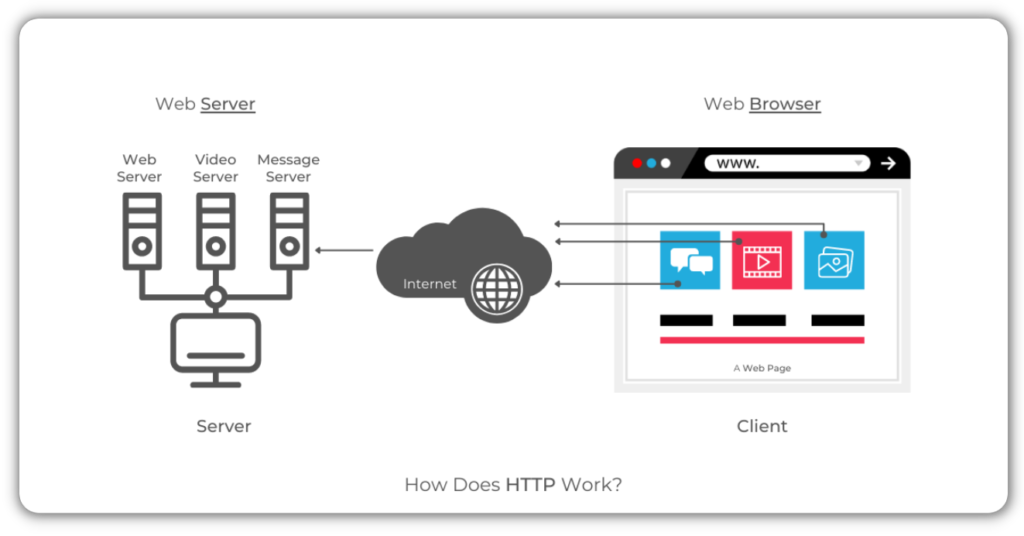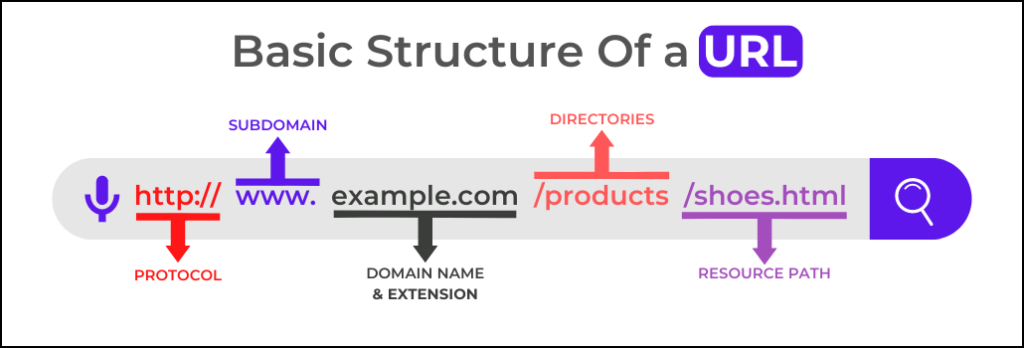The World Wide Web (WWW), also known as W3 or The Web, is a collection of interconnected public web pages and other resources, linked by hyperlinks and URLs, that can be accessed over the internet using web browsers.
It is a part of the internet, but it is not the same thing as the internet.
The internet is a network of networks that connects computers all over the world, while the WWW is an application that runs on top of the internet. The WWW is essentially a way of organizing and accessing the information on the internet.
Tim Berners-Lee invented the WWW in 1989 while working at CERN, the European Organization for Nuclear Research.
The idea was to create a system allowing scientists to share information and collaborate on research more efficiently.
Berners-Lee created a system of hypertext webpages that could be linked using hyperlinks, allowing users to navigate between web pages by clicking links.
The WWW quickly became popular beyond the scientific community, and today it is a global platform for communication, commerce, entertainment, and more.
Websites on the WWW can contain text, images, audio, video, and other types of content. Users can access websites using web browsers such as Google Chrome, Mozilla Firefox, Safari, and Microsoft Edge.
Components of WWW
The World Wide Web (WWW) is made up of several components that work together to allow users to access, navigate, and interact with websites and other online resources. These components include:
● HTTP Protocol: This protocol governs server and client data transfer. It defines the format of messages sent between a web browser and a web server, including requests for web pages and responses with the content of those pages.

● URLs/URIs: To access a web component, a client supplies a unique universal identifier, called a URL (Uniform Resource Locator) or URI (Uniform Resource Identifier) (formally called Universal Document Identifier (UDI)). URLs are addresses used to identify web pages and other online resources, while URIs are a broader category that includes URLs and other types of resource identifiers.

● HTML: HTML (Hypertext Markup Language) is the most common format for publishing web documents. The markup language allows developers to structure content and add elements such as text, images, videos, links, and forms. HTML is readable by web browsers and used to create the content users see on a web page.
Hyperlinking is a fundamental component of the World Wide Web, enabling it to be a network of connected documents.
After having developed the World Wide Web, Tim Berners-Lee established the W3C (World Wide Web Consortium) to standardize and expand the Web. This consortium comprises various core Web interest groups, including web browser developers, governmental institutions, researchers, and universities.
WWW vs. The Internet: What’s The Difference?
The World Wide Web (WWW) and the Internet are often used interchangeably, but they are not the same thing.
The Internet is a global network of interconnected computers and servers that allows for communication and data transfer between devices all over the world. Its vast network provides access to a wide range of online resources, such as email, file sharing, online gaming, and more.
The World Wide Web, on the other hand, is a subset of the Internet. It is a system of interlinked hypertext documents accessed through the Internet. The Web consists of web pages and other online resources connected through hyperlinks.
Simply put, the Internet is like a giant highway system that allows computers to communicate, while the World Wide Web is like the content that is transported on those highways.
So, while the Internet and the World Wide Web are closely related, they are not the same thing.
How Does The WWW Work?
The World Wide Web (WWW) is a system of interlinked documents, images, videos, and other online resources that can be accessed over the Internet. Here is a simplified explanation of how the WWW works:
- A user opens a web browser on their device and enters a Uniform Resource Locator (URL), a unique web page address. The browser sends a request to the server hosting that web page.
- The server responds by sending the web page back to the user’s browser, using the Hypertext Transfer Protocol (HTTP) to transfer the data.
- The user’s browser reads the HTML code of the web page and uses that information to render the page on the user’s device.
- The web page may include links to other web pages or online resources. When the user clicks on a link, their browser sends another request to the server hosting that resource, and the process begins again.
Behind the scenes, much more is happening to make the WWW work smoothly. Web pages are stored on servers, which are powerful computers always connected to the Internet. These servers are managed by organizations and individuals around the world, from small businesses to large corporations.
History of The World Wide Web (WWW)
The World Wide Web (WWW) was invented in 1989 by Tim Berners-Lee, a computer scientist at CERN, as a way to manage information and connect people through digital means. He envisioned a system that could allow people to access and share information easily, regardless of location or device. The WWW was built on several key technologies and concepts, including the hypertext markup language (HTML), uniform resource locators (URLs), and the hypertext transfer protocol (HTTP).
By the end of 1990, the first working system, including the WorldWideWeb browser and an HTTP server, had been implemented. The technology was initially released to other research institutions in January 1991 and then to the general public on August 23, 1991. The Web quickly spread to other scientific and academic institutions, and within two years, 50 websites were created.
CERN made the Web protocol and code available royalty-free in 1993, which helped to promote its widespread use. The release of the Mosaic web browser by the National Center for Supercomputing Applications (NCSA) later that year helped to popularize the Web even further. Mosaic was a graphical browser that could display inline images and submit forms, which were processed by the HTTP server. Its popularity led to the creation of thousands of new websites in less than a year.
Netscape Communications Corporation was founded by Marc Andreessen and Jim Clark in 1994, and they released the Navigator browser, which introduced Java and JavaScript to the Web. Netscape quickly became the dominant browser and went public in 1995, triggering a frenzy for the Web and starting the dot-com bubble. Microsoft responded by developing its own browser, Internet Explorer, which it bundled with Windows and became the dominant browser for 14 years. This led to the so-called browser wars between Netscape and Microsoft.
In 1996, Tim Berners-Lee founded the World Wide Web Consortium (W3C), which created XML and recommended replacing HTML with stricter XHTML. Meanwhile, developers began exploiting an IE feature called XMLHttpRequest to make Ajax applications, launching the Web 2.0 revolution. Mozilla, Opera, and Apple rejected XHTML and created the Web Hypertext Application Technology Working Group (WHATWG), which developed HTML5.
In 2009, the W3C conceded and abandoned XHTML; in 2019, it ceded control of the HTML specification to the WHATWG. The World Wide Web has been central to the development of the Information Age and is the primary tool billions of people use to interact on the Internet today.
